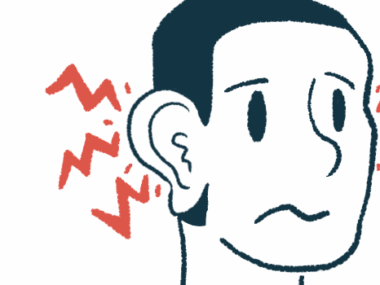Parents of Rett children can identify disease-specific baby babbling
Study shows parents are also able to distinguish 'inconspicuous' babbling
Written by |

Parents of children with Rett syndrome are able to detect disease-specific differences in the sounds made by babies who have not yet begun to speak.
That’s according to a study, “Learning about neurodiversity from parents – Auditory gestalt perception of prelinguistic vocalisations,” published in Research in Developmental Disabilities.
Children diagnosed with Rett syndrome characteristically show differences in development compared to what’s considered typical. For example, prior research has shown that Rett babies sometimes make atypical prelinguistic vocalizations (the noises that babies make before they start speaking in words).
In a previous study, a group of language experts and a separate group of non-experts reviewed recordings of prelinguistic vocalizations from babies with or without Rett syndrome. Results showed the experts were much better at identifying the Rett-related abnormalities.
A notable limitation of this earlier study, however, was that the non-expert group consisted mostly of childless college students in their 20s who were simply asked to identify whether the recording sounded abnormal or not.
Parents may observe early signs that escape notice of professionals
In this new study, scientists wanted to extend the previous findings by examining whether parents of children with Rett syndrome were able to better identify vocal abnormalities associated with the disease.
“Parents are often the first to notice peculiarities in their children’s development,” the researchers wrote. “With intensive and direct daily interactions with their children, parents may notice early signs of neurodevelopmental conditions that could escape the notice of professionals during episodic clinical assessments.”
The study recruited 76 parents of girls with Rett, including 47 mothers and 29 fathers. The participants were played seven recordings of prelinguistic vocalizations: three were abnormal recordings from Rett children, and three were age-typical recordings from typically developing children. The seventh recording was from a child with Rett syndrome, but did not include any features deemed atypical by experts.
For each recording, participants had to rate whether or not they thought the recorded child had Rett syndrome. The accuracy of their guesses was compared with the data from the prior study of experts and college students, which used the same seven recordings.
Results showed that, for the three recordings of typically-developing children and the three of abnormal vocalizations from Rett children, the parents were correct in 62.1% of cases, incorrect in 28.1%, and uncertain in 9.9%. There weren’t any significant differences in accuracy between mothers and fathers, or between parents of different ages.
These findings are “nearly identical” to the accuracy seen for college students in the earlier study, the researchers noted.
“In both studies and in most cases, the participants correctly classified RTT [Rett] versus [typical development] and conspicuous versus inconspicuous vocalisations,” the team said. The researchers added that the accuracy in both studies “was higher than chance level.”
However, there were notable differences for the seventh recording of a Rett child making vocalizations that experts considered not to be atypical. In nearly half (47.4%) of their guesses, Rett parents correctly identified this recording as coming from a Rett child, whereas in the earlier study of college students, this recording was judged as abnormal 17.5% of the time.
Parents may prove to be valuable informants in Rett
“In other words, a substantial proportion of the parents correctly identify that the [seventh recording] was from an infant with RTT, even though experts rated this sequence as inconspicuous,” the researchers wrote.
This notable difference suggests there may have been features in the seventh recording that sounded “Rett-like,” at least to some parents, even though experts judged that the recording sounded typical. However, since this study included only one such ambiguous recording, the researchers cautioned that more research is needed to understand this finding.
“It is not clear what features the parents may have been perceptive to, which would be an interesting question for future research, especially with a higher number of inconspicuous vocalisations from infants with RTT,” they wrote.
Overall, these results broadly support the idea that parents of Rett children can sometimes recognize disease-specific changes in the noises babies make.
“Our results suggest that parents of children with RTT appear to be sensitive to the differences between vocalisations from RTT versus [typically developing] infants,” the researchers concluded, adding that this finding indicates that “Parents may prove to be valuable informants especially for revealing subtle yet characterising features in prelinguistic vocalisations from individuals with RTT.”







